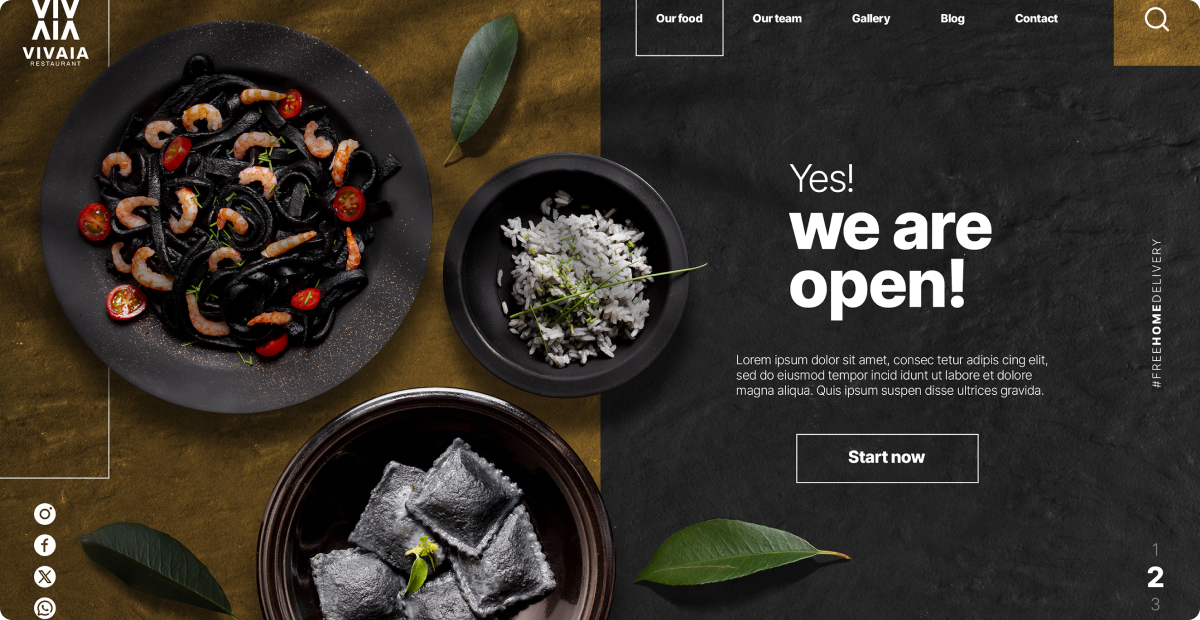Key Takeaways
In 2025, American restaurants witnessed a staggering 320% increase in off-premises dining orders, signaling a monumental shift in consumer behavior. Your to-go bag might now have a larger audience than your physical restaurant. Driven by the goal of satiating customer appetite and keeping them engaged, off-premises dining has become a cornerstone of profitability and resilience in the restaurant industry.
However, as you recover sales through diverse channels, it’s crucial to understand the challenges and adapt to the evolving dynamics. The key to thriving in this new era lies in driving repeat purchases and maximizing the potential of your to-go bag.
The Three Biggest Challenges Restaurants Face in 2025
As the restaurant industry continues to recover from the aftermath of the COVID-19 pandemic, owners and management teams are grappling with three major challenges:
- Finding and Retaining Quality Staff
The post-pandemic landscape has seen restaurants reopening and expanding operations, making quality personnel more critical than ever. The challenge lies in the imbalance of supply and demand.- With many restaurants now offering extended services like weekend brunches and late-night dining, finding qualified candidates has become increasingly difficult.
- To attract and retain top talent, restaurants must offer an attractive work culture that outshines competitors.
- In an industry known for high turnover rates, investing in employee satisfaction is no longer optional—it’s essential.
- Tackling Rising Costs
The pandemic disrupted global supply chains, leading to a 5% annual increase in food costs, a trend that has persisted into 2025. Additionally, third-party delivery platforms like DoorDash and Grubhub charge commissions as high as 25-30%, further squeezing profit margins. To combat this, restaurants must focus on food cost control and menu pricing optimization. Temporarily discontinuing low-demand items and tailoring menus for takeout and delivery can help mitigate rising costs. - Attracting New Customers
In 2025, a restaurant’s success hinges on its ability to attract local diners through digital channels. Studies show that 77% of consumers browse restaurant websites before placing orders, and 90% research new eateries online. This underscores the importance of a 360-degree marketing strategy and a robust online presence. Restaurants must leverage digital platforms to stay visible and relevant in a highly competitive market.
How Leading Brands Are Using Their To-Go Bag to Rebound and Reengage Guests
Several leading brands have successfully adapted to the new normal by leveraging innovative strategies:
- Billy Brick’s Wood Fired Pizza: Owner Ric Gruber launched multiple virtual restaurant concepts based on trending cuisines on Grubhub. Despite starting as a pizza chain, Gruber’s virtual restaurants now offer everything from salads to pasta, generating an additional $2,000 per concept weekly.
- McDonald’s: To celebrate National Cheeseburger Day, McDonald’s offered app users a 50-cent double cheeseburger through its MyMcDonald’s Rewards program. This one-day promotion not only drove app engagement but also boosted sales.
- Burger King: By optimizing its drive-thru experience, Burger King became the most popular fast-food drive-thru in the U.S. in 2021. In states like Hawaii, searches for Burger King increased by 600%, showcasing the power of convenience and accessibility.
Five To-Go Bag Strategies to Rapidly Grow Sales and Revenue in 2025
- Enhance Your Online Visibility
In 2025, having a strong online presence goes beyond just a website or app. Restaurants must be visible wherever their target audience is—whether on social media, food delivery platforms, or search engines. Invest in a comprehensive marketing strategy that ensures a seamless ordering experience and attracts new customers. For instance, leveraging local SEO and targeted ads can drive traffic to your website and app. - Offer Customer Loyalty Programs
Loyalty programs have evolved. In 2025, customers expect rewards not just for themselves but also for their friends and family. Create a loyalty program that incentivizes referrals. For example, offer a 100% discount coupon after five referrals make a purchase. This not only boosts customer retention but also expands your customer base. - Invest in Multiple Sales Channels
Diversifying sales channels is no longer optional. In addition to online ordering, consider options like curbside pickup, kiosks, and delivery partnerships. National chains like Dunkin’, The Cheesecake Factory, and Chili’s have seen significant revenue growth by offering multiple ordering options. As David Overton, CEO of The Cheesecake Factory, noted, “Guests enjoy the ease of placing pickup orders online.” - Organize Virtual Events
With offline events still recovering, virtual events offer a unique way to engage customers. Live-stream special occasions or cooking classes to create a strong brand-customer connection. This keeps your restaurant top-of-mind and fosters loyalty. - Provide Offers and Happy Hours
Special offers and happy hours remain a tried-and-true strategy. In 2025, consider offering seasonal treats like rum cakes during Christmas or themed menus for Halloween. Happy hours targeted during slow periods can boost sales and attract customers during lean hours.
Conclusion
The restaurant industry in 2025 is defined by adaptability and innovation. By addressing challenges like staffing, rising costs, and customer acquisition, and implementing strategies like enhancing online visibility, loyalty programs, and virtual events, restaurants can not only survive but thrive. The to-go bag is no longer just a convenience—it’s a powerful tool for growth and resilience in the digital age.
Frequently Asked Questions


.gif)

.png)


.png)



